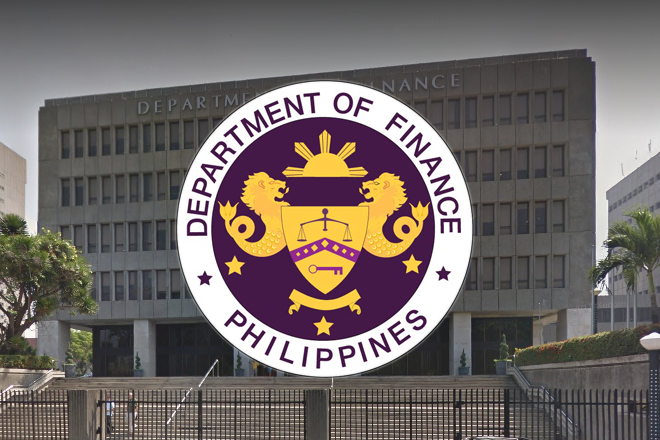Dominguez hopeful of 7% growth for economy on medium term
July 4, 2018
Finance Secretary Carlos Dominguez III has expressed confidence in the economy expanding by 7 percent or better over the medium term on the back of the government’s “mammoth investment” of up to P9 trillion for the rest of the Duterte presidency on its “Build, Build, Build” infrastructure program.
From January to May, Dominguez said national government spending on infrastructure reached P281 billion, an increase of 42 percent over the same period last year, and which is on top of private sector construction and public sector projects financed through Public-Private Partnerships (PPPs).
Dominguez said with P281 billion invested on infrastructure in the first five months, the government is averaging close to P56 billion a month in spending on "Build, Build, Build."
With 30 percent of this spending going to wages, about P17 billion is infused into the economy per month in the form of additional income and purchasing power for workers, on top of creating some 100,000 new jobs so far, spurring economic activity in related sectors, and other multiplier effects, he said.
"Build, Build, Build will drastically alter the Philippine economic landscape. It will create over a million jobs per year. It will bring our logistics backbone up to par in a region that is growing very dynamically,” Dominguez said at the opening here of the press briefing by the government's “Build, Build, Build” team.
Dominguez said with other reforms such as the long-due modernization of the tax system and improvements in the ease of doing business, the Duterte administration envisions the infrastructure program to reduce poverty incidence by a third of the 2015 level of 21.6 percent to just 14 percent by 2022.
“This will be the absolute measure of success of our strategy of inclusive growth. This is the goal that has been set for us by President Duterte, and this is how we are implementing it,” said Dominguez. “We fully aspire to be the fastest growing economy in the fastest growing region in the world. This will not be an easy task to accomplish. But we are ready to meet the challenges, driven by the optimism of our people, the confidence of our development partners, and the leadership of President Duterte.”
Joining Dominguez at the event were the rest of the “Build, Build, Build team”—Secretaries Ernesto Pernia of the National Economic and Development Authority (NEDA), Mark Villar of the Department of Public Works and Highways (DPWH), Arthur Tugade of the Department of Transportation (DOTr), and Vivencio Dizon, president and CEO of the Bases Conversion and Development Authority (BCDA), along with MTD Clark Inc. chairman Isaac David and MTD Clark Inc. President Mr. Nicholas David.
Dominguez said New Clark City, which sits at a nexus of well-developed roadways, will soon be connected to Manila by the second stage of the PNR North Line, and will be linked to the Subic Freeport by another high-speed rail line.
“We are seeing here today the birth of a new metropolis,” he said. “The New Clark City will bring in several hundred enterprises and billions in new investments. The excellent logistics and the prospective rail link to Subic will make this area an ideal place to build manufacturing, especially food processing and other export industries.”
Dominguez said New Clark City will also be the first “smart and green” metropolis in the country.
The City will also include a National Government Administrative Center that will host the main offices of several government agencies and house back-up facilities for all state offices to ensure operational continuity in the event of a major calamity in the Manila area.
World-class sports facilities will also be built within the City in time for the country’s hosting of the Southeast Asian Games in November next year.
Of the 75 flagship projects, 35 have hurdled the approval process.
Aside from the TRAIN, the “Build, Build, Build,” program is funded by Official Development Assistance (ODA) loans and grants, government’s sale of debt securities in the offshore market, financing from multilateral institutions, and hybrid PPPs. DMS
Latest Videos
- THE UNTOLD STORY EXPERT INSIGHTS INTO THE UKRAINE
- NEGOTIATING A NEW ORDER US RUSSIA TALKS ON UKRAIN
- Ukraine: A Pawn in the Geopolitical Game? Will Trump Intervene?
- US VP VANCE CRITICIZES EUROPEAN DEMOCRACIES AT MUNICH SECURITY CONFERENCE
- UNCOVERING THE WEB OF DECEIT: CIA INFILTRATION OF THE MEDIA
- SHIFTING SANDS: TULSI GABBARD’S CONFIRMATION AND THE EVOLVING GLOBAL LANDSCAPE
- FAUCI SCANDAL: A THREAT TO GLOBAL HEALTH AND DEMOCRACY






